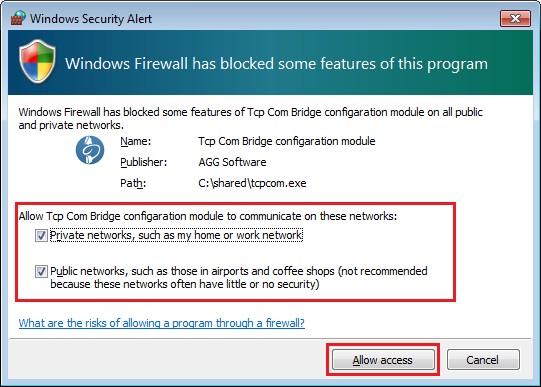|
Checking your IP address 3.17.164.75...You may access your web server from Internet using the URL address:TroubleshootingTo enable data transmission, you might need to change the network settings on your computer and/or the router in your network. Most computers are not connected directly to the Internet, so other computers may be unable to connect directly to your computer via the Internet and transmit data. How to check whether your computer is connected directly to the Internet?If a network address of your computer belongs to one of the ranges listed below, it means that your computer is in a local private network and is connected to the Internet via a router: 10.0.0.0 - 10.255.255.255 172.16.0.0 - 172.31.255.255 192.168.0.0 - 192.168.255.255 For more details, read this article: https://en.wikipedia.org/wiki/Private_network Your public IP address on the Internet is showed above. You need to know the public IP address of the other computer on the Internet. To configure a connection for operating our software as a server, you need to configure port forwarding on your router. Port forwarding on the router lets you redirect all data, coming to the specified public IP address and port, to the local IP address. For example: Your address in the local network is 192.168.1.12. Your public IP address is 66.249.75.147. All clients will be sending data only to your public IP address. The router will forward data to 192.168.1.12, implicitly binding your local IP address to your public IP address. Note: For our software to operate as a server, it must run on a computer with a static local IP address. That's because the router is configured to forward data to a specific address only. How to configure the router to redirect data?1. Open your router's control panel. Usually you configure the router via a web browser. Try entering http://192.168.1.1/ in the address bar. 2. On the control panel, look for "Port Forwarding" or "Virtual Server" settings. 3. Add a data forwarding rule. Example: Local port: 10232 Local IP address: 192.168.1.12 Remote port: 10232 4. Save the changes, and reboot the router. For more details about configuring port forwarding for any router model of any vendor, visit this website: www.portforward.com/. If your router model is not listed, try reading instructions for similar models. Dynamic public IP addressHaving a dynamic public IP address may not let our software operate as a server. Each time you connect to the Internet, your public IP address may change, so a remote computer will be unable to connect to a predefined IP address. If you don't know what type of IP address you have, ask your Internet service provider. Dynamic DNS services can solve this problem by binding your dynamic IP address to your permanent domain name. For example, you can use these dynamic DNS services: If you register at such a website, you will get a permanent domain name. If you install a special software from the DNS service provider on your computer, you can automatically update the binding of your dynamic IP address to the domain name. Many state-of-the-art routers have built-in support for dynamic DNS services. FirewallAnother thing that may hinder the transmission of data via the Internet is the firewall. The firewall's purpose is to prevent any unauthorized transmission of data. All modern operating systems have a built-in firewall. All-in-one antiviral bundles include a firewall too. When our attempts to use any TCP port for the first time, the Windows Firewall will show a warning. To let our software operate properly, you must allow it to connect to the network. You can see an example of firewall warning in Figure 1.
Figure 1: Firewall warning If you use a third-party firewall, you may also need to configure it to let our software connect to the network. Please refer to your firewall's manual, and add our software to the list of exceptions. |
